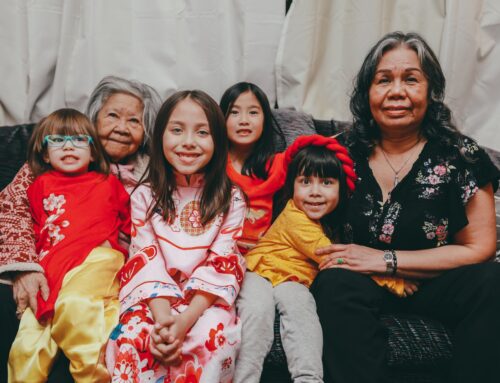Navigating the world of US immigration visas can be complex, but understanding the basics can make the process smoother. A US visa allows foreign citizens to enter, depart, or stay in the country for a specified period. There are two main types of visas: immigrant visas, for those who intend to live permanently in the United States, and nonimmigrant visas, for temporary stays such as tourism, business, or education.
There are several categories of US immigration visas, each with its own requirements and application process. To obtain a visa, applicants must typically go through a series of steps, including completing forms, gathering documentation, and undergoing an interview at a US embassy or consulate. In some cases, a visa may be granted upon arrival in the United States, while other situations may require applying beforehand.
Key Takeaways
- A US visa permits foreign citizens to enter and stay in the country for a specified period.
- Visas come in two main types: immigrant visas for permanent residency and nonimmigrant visas for temporary stays.
- The visa application process usually involves completing forms, providing documentation, and participating in an interview at a US embassy or consulate.

Immigrant and Nonimmigrant Visas
When it comes to US immigration visas, there are two main categories to consider: immigrant visas and nonimmigrant visas. Understanding the differences between these two types of visas is crucial for determining which one best suits your needs and goals.
Immigrant visas are issued to foreign nationals who intend to live permanently in the United States. If you’re planning to move to the US to work, study, or join family members, you’ll most likely need an immigrant visa. Once your immigrant visa application is approved, you’ll be eligible to apply for a green card, which signifies your legal permanent resident status.
On the other hand, nonimmigrant visas are designed for individuals who wish to be in the United States on a temporary basis. This can be for various reasons, such as tourism, medical treatment, business, temporary work, or study. There are over 20 different categories of nonimmigrant visa classifications to accommodate your specific reason for visiting the US.
To apply for either an immigrant or nonimmigrant visa, you’ll need to follow the appropriate application process. This typically involves completing the relevant application forms, submitting required documentation, attending an interview at a US consulate or embassy, and paying any necessary fees.
In summary, it’s important to determine whether you require an immigrant or nonimmigrant visa based on your intentions while in the United States. Immigrant visas cater to those looking to establish permanent residency, while nonimmigrant visas accommodate temporary visits for various purposes. By understanding the differences between these two visa types, you can make an informed decision about which one is the right fit for your plans in the US.

Categories of US Immigration Visas
In this section, you’ll learn about the different categories of US immigration visas. These visas can be divided into various types based on their purpose and duration. Let’s take a closer look at each category.
Family-Based Immigrant Visas
Family-Based Immigrant Visas are for those who want to join their close relatives living in the United States. If you’re a US citizen or a lawful permanent resident (Green Card holder), you can sponsor your family members for an immigrant visa. Your spouse, children, parents, and siblings can benefit from these visas, allowing them to live permanently in the United States.
Employment-Based Immigrant Visas
If you’re looking to work in the United States permanently, Employment-Based Immigrant Visas are designed for you. These visas allow employers to sponsor qualified foreign workers. Employment-Based Immigrant Visas are divided into several preference categories, ranging from priority workers to skilled workers, professionals, and investors. Your eligibility for these visas will depend on your skills, experience, and job offer from a US employer.
Visitor and Business Visas
Visitor and Business Visas are part of the Nonimmigrant Visa Categories. If you’re planning for a short-term visit to the United States for tourism, business, or medical treatment, these visas are ideal. They have a fixed duration and don’t entail a path to permanent residence.
Student and Exchange Visitor Visas
If you’re considering studying or participating in an exchange program in the United States, Student and Exchange Visitor Visas are specifically tailored for you. These nonimmigrant visas let you participate in academic, vocational, or cultural exchange programs and have a separate application process. Remember that you’ll need to maintain your student or exchange visitor status to stay in the United States for the duration of your program.
Temporary Worker Visas
Temporary Worker Visas are another type of nonimmigrant visas designed for those seeking to work in the United States for a limited period. These visas are divided into categories based on the type of work, skill level, and other requirements. Common examples include H-1B for specialty occupations, H-2A for agricultural workers, and L-1 for intra-company transferees.
As you explore your options for US immigration visas, consider which category suits your needs and circumstances best. Remember to carefully review the eligibility requirements and application procedures for each visa type before you apply, and good luck with your journey to the United States!

Visa Application Process
The journey to getting a U.S. immigration visa might seem daunting, but don’t worry! This friendly guide will help you navigate through the application process with ease.
First of all, you need to determine your eligibility and the appropriate visa category based on family ties, employment, adoption, special immigrant categories, or the diversity visa. Remember, it’s essential to choose the right category for a smoother journey.
Once you’ve determined your eligibility, the next step is to have your U.S. citizen or permanent resident sponsor submit a petition for you. This is usually done by filing an I-130, I-140, or other relevant forms with the United States Citizenship and Immigration Services (USCIS).
After the petition has been submitted, you’ll need to wait for USCIS to approve it. Patience is key during this period! Once approved, your application will be forwarded to the National Visa Center (NVC), who will assign you a case number.
At this stage, you’ll be asked to pay the necessary fees and submit the required documents to the NVC. Make sure you provide all the requested information, such as your passport, proof of financial support, as well as any other required civil documents.
You’re now one step closer to the finish line! The NVC will schedule a visa interview for you at the nearest U.S. consulate or embassy. It’s crucial to be prepared for this interview, as it’s an essential part of the process.
Before your interview, read up on the visa requirements outlined by the U.S. Department of State and ensure you bring all the necessary documents. During the interview, a consular officer will assess your case and determine if you’re eligible for the visa. Don’t forget to be honest and upfront during this conversation!
Once your visa is approved, congratulations! Your passport will be stamped with the visa, and you’ll be all set to start your new journey in the United States.
Permanent Residency and Green Card
If you’re looking to live and work in the United States permanently, obtaining a Green Card is essential. This provides you with permanent resident status, which comes with various privileges and responsibilities.
As a Green Card holder, you can legally work in the U.S. and even apply for employment-based immigrant visas. Around 140,000 of these visas are available each fiscal year for qualified applicants, their spouses, and children. Your eligibility for permanent residency can be acquired through a family connection, a job offer, or other categories.
The Adjustment of Status process allows you to apply for a Green Card while you’re within the United States. Meanwhile, Consular Processing is for applicants applying from outside the country. Both processes require you to follow specific steps and provide necessary documents to establish your eligibility.
As a friendly reminder, make sure to periodically renew your Green Card. It’s also crucial to maintain your permanent resident status to avoid any problems like losing your privileges or being deported from the United States.
In conclusion, obtaining a Green Card provides you with the opportunity to live and work in the United States indefinitely. Be sure to explore all your options and adhere to the required processes to ensure a smooth application experience. Good luck on your journey to becoming a permanent resident!

Travel to the United States
Traveling to the United States can be an exciting adventure! As you plan your trip, it’s essential to familiarize yourself with the necessary documentation and procedures to ensure a smooth entry into the country.
If you’re lucky, you might be eligible for visa-free travel under the Visa Waiver Program (VWP). This allows citizens of participating countries to visit the United States for up to 90 days without obtaining a visa, for tourism or business purposes. To find out if your country is part of this program, check the U.S. Department of State’s VWP information.
For those who do need a visa, remember that obtaining one is a crucial step before your departure. A visa is a travel document placed in your passport that allows you to enter the United States. To apply for a visa, visit the U.S. Department of State’s visa website to learn about the different types of visas and their requirements.
When you arrive in the United States, be prepared for an inspection by Customs and Border Protection (CBP) officers at the port-of-entry. This is an important step to ensure compliance with immigration, customs, and agriculture regulations. To make the process quicker and easier, familiarize yourself with the CBP’s Know Before You Visit guidelines.
Here are some key points to remember for your entry to the United States:
- Have your passport and travel documents ready.
- Be honest and declare any items that are subject to inspection, such as food or agricultural products.
- Have a clear understanding of the purpose of your trip and your planned itinerary.
By staying informed and prepared, you’ll be able to navigate the U.S. immigration process with ease and start enjoying your trip!
Frequently Asked Questions
What are the requirements for an H-1B visa?
To qualify for an H-1B visa, you must have a job offer from a U.S. employer in a specialized field, such as engineering, science, or computer programming. You must also possess a bachelor’s degree or higher in the relevant field. Additionally, your employer must file a Labor Condition Application and a Form I-129. For more details, visit the U.S. Citizenship and Immigration Services (USCIS) website.
How do I apply for a Diversity Immigrant Visa?
The Diversity Immigrant Visa (DV) Program, also known as the Green Card Lottery, is an annual program where 50,000 immigrant visas are randomly chosen from eligible entries. To apply for the DV program, you must submit your entry online during the designated registration period, usually between October and November. Learn more about the eligibility requirements and application process.
What is the difference between F visa and O visa?
F visas are for academic students, while O visas are for individuals with extraordinary abilities in various fields. The F visa allows you to enter the United States for the purpose of studying at an accredited academic institution. On the other hand, the O visa is for those who have demonstrated a high level of achievement in their field, such as arts, sciences, education, business, or athletics. For more information, review the F visa and O visa requirements.
How can I schedule a U.S. visa appointment?
To schedule a U.S. visa appointment, you must first complete the online visa application form (DS-160) and pay the associated fee. Afterward, you can schedule your appointment through the U.S. Department of State’s website or by contacting the U.S. embassy or consulate in your country of residence. It is essential to schedule your appointment well in advance to accommodate any delays in processing.
What is the process for the immigrant visa application?
The immigrant visa application process begins when a U.S. citizen or Lawful Permanent Resident (LPR) files an approved petition with U.S. Citizenship and Immigration Services (USCIS) on your behalf. Once approved, the case is transferred to the National Visa Center (NVC). You will then submit your visa application form (DS-260) and supporting documents before scheduling an interview at the U.S. embassy or consulate. For a detailed step-by-step guide, visit the U.S. Department of State’s website.
What should I prepare for an immigration visa interview?
When attending an immigration visa interview, you will need to bring the following items:
- Appointment confirmation letter
- Completed DS-260 application form confirmation page
- Valid passport
- Passport-sized photographs
- Original or certified copies of civil documents
- Medical examination results
- Fee payment receipts
Additionally, you should be prepared to discuss your intentions for immigrating to the United States, your relationship with your U.S. petitioner, and other relevant personal information.




